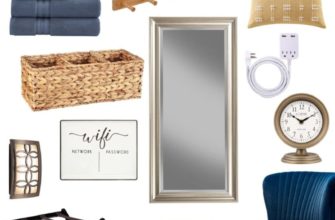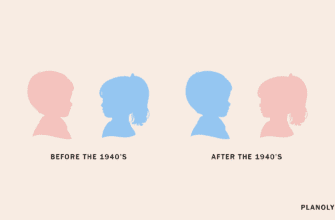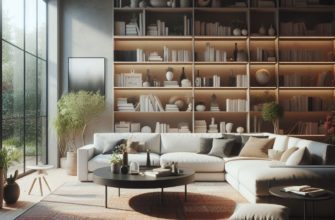When it comes to designing a space for your baby, it’s important to create an atmosphere that is not only aesthetically pleasing but also promotes inclusivity and celebrates individuality. Gone are the days of traditional gender stereotypes, as more and more parents opt for gender-neutral nurseries that provide a versatile and adaptable environment.
With a growing awareness and understanding of gender identities and expressions, creating a gender-neutral nursery allows your child the freedom to explore and express themselves without limitations or expectations. By embracing a design that transcends gender norms, you can create a space where your little one can feel comfortable, accepted, and encouraged to be themselves.
Revolutionize Your Health & Lifestyle!
Dive into the world of Ketogenic Diet. Learn how to lose weight effectively while enjoying your meals. It's not just a diet; it's a lifestyle change.
Learn MoreBy selecting a color palette that is not tied to traditional gender norms, such as soft pastels or bright primary colors, you can establish a neutral backdrop that serves as a canvas for self-expression. Consider incorporating bold accents or patterns that evoke a sense of playfulness and creativity, allowing your child’s personality to shine through. Remember, it’s all about creating an environment that stimulates imagination and encourages individuality.
Incorporating elements of nature into the nursery can help to foster a sense of tranquility and connection with the world around us. Opt for natural materials such as wood or bamboo, and introduce plants or botanical prints to bring a touch of the outdoors inside. By bringing nature into the space, you are not only creating a calming environment but also instilling a sense of appreciation and responsibility for our planet from an early age.
- Creating a Welcoming Environment for Your Little One
- Choosing a Neutral Color Palette
- Incorporating Natural and Organic Elements
- Adding Soft Textures and Fabrics
- Functional Furniture and Storage Solutions
- Opting for Multi-Purpose Furniture
- Maximizing Storage with Shelving and Baskets
- Setting up a Diaper Changing Station
- Engaging Stimuli for Cognitive Development
- Introducing Stimulating Mobiles and Toys
- Questions and answers
Creating a Welcoming Environment for Your Little One
When preparing a space for your new arrival, it is essential to create an atmosphere that is inviting and warm. Designing a nursery that exudes comfort and coziness will provide a nurturing environment for your little one to grow and thrive.
Here are some key considerations when creating a welcoming environment for your baby:
- Soft and soothing colors: Opt for a palette that includes gentle pastels, muted tones, or earthy shades to create a serene and calming atmosphere.
- Natural elements: Incorporate natural materials such as wood, bamboo, or rattan to bring a sense of warmth and harmony to the space.
- Plush textures: Choose soft fabrics and textures for items like bedding, rugs, and curtains to create a cozy and inviting feel.
- Ambient lighting: Use soft and dimmable lighting options, such as table lamps or string lights, to create a soothing ambiance that promotes relaxation and sleep.
- Personal touches: Add personal touches like framed family photos, handmade artwork, or cherished keepsakes to make the space feel unique and special.
- Organizational solutions: Keep the nursery clutter-free by incorporating storage solutions such as baskets, shelves, or labeled containers to promote a sense of order and ease.
- Comfortable seating: Include a comfortable chair or glider in the nursery where you can spend quality time bonding with your baby.
- Aromatherapy: Consider using natural scents, such as lavender or chamomile, to create a soothing and calming atmosphere in the nursery.
By considering these elements, you can design a welcoming environment for your little one that ensures their comfort, relaxation, and overall well-being. Remember, the key is to create a space that nurtures and supports their growth, allowing them to flourish in a tranquil and loving atmosphere.
Choosing a Neutral Color Palette
In this section, we will explore the process of selecting a color scheme that is inclusive and adaptable for your baby’s nursery. When it comes to designing a space that transcends traditional gender norms, it is important to consider a palette that is neither specifically masculine nor feminine, but rather versatile and welcoming to all.
When selecting colors for your baby’s nursery, it is crucial to opt for hues that are gender-neutral, allowing for a more inclusive and open atmosphere. Neutrals can range from soft and soothing shades, such as warm grays and creamy whites, to earthy tones like beige and taupe. By choosing colors that do not adhere to specific gender stereotypes, you create a space where your baby can grow and thrive without limitations or expectations.
Another consideration when choosing a neutral color palette is to incorporate hints of nature-inspired tones. Soft greens resembling fresh leaves or gentle blues reminiscent of a clear sky can add a calming and harmonious element to the nursery. These colors evoke a sense of tranquility and balance, ideal for creating a peaceful environment for your little one.
It is also worth exploring the use of pastel colors in your gender-neutral nursery. Soft pinks, light yellows, and muted purples can bring a touch of whimsy and playfulness to the space without being overly gender-specific. These gentle shades can be incorporated through various elements, such as bedding, curtains, or accent pieces, adding depth and character to the overall design.
In conclusion, selecting a neutral color palette for your baby’s nursery is a thoughtful and intentional decision. By choosing colors that are neither distinctly masculine nor feminine, you create an inclusive and adaptable space that allows your child to express themselves freely. Incorporating nature-inspired tones and pastel shades can enhance the overall ambiance of the nursery, fostering a sense of tranquility and playfulness. Remember, a gender-neutral color palette opens up a world of possibilities for your little one to grow and thrive in a space that is truly their own.
Incorporating Natural and Organic Elements
Creating a nursery space that embraces the beauty and simplicity of nature is a wonderful way to provide a calming and nurturing environment for your baby. By incorporating natural and organic elements into the design, you can create a space that is both visually appealing and environmentally conscious.
One way to incorporate natural elements is by using materials such as wood, bamboo, or cork. These materials not only add warmth and texture to the space, but they are also sustainable and eco-friendly choices. Consider using wooden furniture, like a crib or rocking chair, or bamboo blinds for the windows. Incorporating natural fibers, such as organic cotton or wool, for bedding and rugs can also contribute to the overall organic feel of the nursery.
Another way to bring nature indoors is by incorporating plants and greenery. Adding potted plants or hanging terrariums can not only improve air quality but also bring a sense of tranquility to the space. Choose low-maintenance plants that thrive indoors with minimal sunlight, such as succulents or ferns. Adding a touch of greenery can create a soothing and inviting atmosphere for your little one.
When it comes to the color palette, opting for earthy tones like shades of green, brown, or muted yellows can further enhance the natural ambiance of the nursery. Avoiding overly bright and stimulating colors can help create a more serene environment. Opt for natural or non-toxic paints and wall coverings to ensure a healthy and eco-friendly atmosphere.
Incorporating natural and organic elements into your baby’s nursery not only creates a gender-neutral space but also promotes a connection with nature from an early age. By choosing sustainable materials, adding plants, and using earthy tones, you can create a nurturing and environmentally conscious environment for your little one to thrive in.
Adding Soft Textures and Fabrics
Enhancing the sensory experience in your baby’s space can be achieved by incorporating a variety of soft textures and fabrics. These elements bring a comforting and cozy atmosphere, while also offering visual interest and dimension to the room.
By introducing a range of tactile materials, such as plush fabrics, knit blankets, and chenille cushions, you can create a gentle and inviting environment for your little one. Opting for soft textures not only enhances the overall aesthetic appeal of the nursery, but also provides a sensory-rich space for your baby to explore and engage with their surroundings.
The use of organic and natural fabrics can also contribute to an eco-friendly and sustainable nursery design. Consider incorporating cotton, bamboo, or linen materials, which not only feel soft to the touch but also have the added benefit of being gentle on your baby’s delicate skin.
Additionally, adding layers of soft textures through items like fluffy rugs, plush wall hangings, or woven tapestries can help create a sense of warmth and coziness in the room. These elements can be strategically placed to create focal points or to add depth to specific areas, ensuring that the nursery exudes a welcoming and comforting ambiance.
When selecting soft fabrics and textures, consider a neutral color palette that can be easily complemented by other design elements. This allows you to effortlessly update the nursery as your baby grows and their preferences evolve. Mixing and matching different textures and patterns can also add character to the space, creating a visually appealing and stimulating environment for your little one.
Remember, a well-designed nursery goes beyond aesthetics and incorporates elements that provide comfort and sensory stimulation. By carefully incorporating soft textures and fabrics in your baby’s space, you can create a nurturing and versatile environment that promotes relaxation and engagement.
Functional Furniture and Storage Solutions
Maximizing the functionality of your nursery requires careful consideration of the furniture and storage solutions you choose. By selecting versatile pieces that can adapt to your changing needs, you can create a space that is both practical and stylish.
- Multi-purpose cribs: Opt for cribs that can easily convert into toddler beds or daybeds, allowing them to grow with your child. This not only saves you money in the long run but also provides a seamless transition from infancy to toddlerhood.
- Modular shelving units: Invest in flexible shelving systems that can be rearranged and expanded as your storage needs evolve. These modular units make it easy to organize and display your baby’s essentials, while also adding a touch of modernity to the room.
- Storage ottomans: Not only do storage ottomans provide a comfortable place to sit and relax, but they also offer hidden storage compartments for toys, blankets, and other items. Their versatility makes them a practical addition to any nursery.
- Wall-mounted organizers: Maximize vertical space by installing wall-mounted organizers, such as floating shelves or hanging baskets. These solutions keep frequently used items within easy reach while keeping the floor clear for playtime.
- Convertible changing tables: Consider investing in a changing table that can be converted into a dresser or desk once your baby outgrows diaper changes. This allows you to repurpose the piece and extend its lifespan.
- Stackable storage bins: Keep your baby’s belongings organized with stackable storage bins. Choose ones with labels or transparent sides for easy identification of contents. These bins can be easily stacked and stored in closets or under furniture.
- Mobile storage carts: Versatile storage carts on wheels offer a convenient solution for quickly moving items around the nursery. Use them to store diapers, wipes, bottles, or even as a portable craft station as your child grows.
By incorporating these functional furniture and storage solutions into your gender-neutral nursery design, you can create a space that is adaptable, organized, and suitable for your baby’s changing needs.
Opting for Multi-Purpose Furniture
When it comes to creating a versatile and functional nursery space for your little one, one essential aspect to consider is choosing furniture that serves multiple purposes. By selecting multi-purpose furniture items, you can maximize the efficiency of the nursery while ensuring a stylish and cohesive design.
Instead of cluttering the room with individual pieces for various functions, opting for multi-purpose furniture allows you to save space and create a more streamlined environment. These versatile pieces can serve multiple needs, such as storage, seating, and changing stations, all in one. Not only does this approach promote efficient use of the available space, but it also provides a practical solution for transitioning the nursery as your child grows.
Investing in convertible cribs that can easily transform into toddler beds or daybeds is one example of multi-purpose furniture. This adaptable piece grows with your child, eliminating the need for purchasing additional furniture as they transition from a crib to a bed. Similarly, a dresser with an attached changing table top offers both storage for clothes and essentials, as well as a convenient space for diaper changes.
In addition to cribs and dressers, consider including multi-functional seating options in your nursery design. A comfortable glider or rocking chair can provide a cozy spot for feedings and soothing your baby to sleep. Look for ones with built-in storage compartments or ottomans that double as storage units, allowing you to keep blankets, books, or other essentials within reach.
Remember to select furniture pieces that match your desired aesthetic and gender-neutral theme. Look for neutral colors and materials that can easily complement any nursery decor. By incorporating multi-purpose furniture into your gender-neutral nursery, you can create a practical and adaptable space that caters to both the needs of your baby and your design preferences.
Maximizing Storage with Shelving and Baskets
In this section, we will explore the various ways you can optimize storage in your baby’s nursery using shelving units and baskets. Creating a functional and organized space is essential for any parent, and these storage solutions will help you keep all your baby essentials easily accessible and neatly arranged.
Shelving units are a versatile addition to any nursery. They not only provide ample storage space but also serve as a stylish display for your baby’s belongings. You can choose from a variety of shelving options, such as floating shelves, wall-mounted shelves, or freestanding bookcases, depending on the available space and your personal preference.
Organizing baskets are an excellent complement to shelving units, allowing you to categorize and store different items effectively. Use baskets with labels or tags to easily identify the contents inside, whether it’s diapers, toys, blankets, or books. Opt for neutral-colored baskets that blend seamlessly with your nursery decor, or add a pop of color for a playful touch.
When arranging your shelves, consider a mix of open and closed storage. Use open shelves for frequently accessed items that you want to showcase, such as cute baby outfits or beloved storybooks. Closed storage options like baskets or bins can hide away items that are not as visually appealing, keeping your nursery clutter-free and organized.
To make the most of your nursery’s vertical space, add stacking shelves or install shelves above changing tables or dressers. This way, you can utilize every inch of available space while keeping essential items within arm’s reach. Additionally, consider investing in adjustable shelves that can accommodate your changing storage needs as your baby grows.
In summary, incorporating shelving units and baskets into your gender-neutral nursery design is a strategic way to maximize storage and keep everything in its proper place. Whether you prefer minimalist or whimsical decor, these storage solutions will help you create a functional and visually appealing space for your little one.
Setting up a Diaper Changing Station
Creating a functional and efficient diaper changing station is an essential part of preparing for the arrival of your little one. This section will guide you through the steps of setting up a designated area for diaper changes, ensuring convenience and safety for both you and your baby.
Begin by selecting a suitable location for the diaper changing station. Choose a spot in your home that is easily accessible and provides enough space for you to move around comfortably. Consider placing it near a water source for convenient access to clean supplies.
Next, gather all the necessary supplies and equipment. This includes diapers, wipes, diaper rash cream, a changing pad or mat, and a diaper disposal system. Organize these items in a designated area, whether it be a shelf, a tabletop, or a changing table, to keep them easily within reach.
When it comes to the changing pad or mat, select one that is comfortable for your baby and easy to clean. Look for a waterproof and wipeable material that can be sanitized easily. Additionally, consider using a contoured changing pad with raised sides for added safety and support.
Safety should be a top priority when setting up a diaper changing station. Ensure that the changing area is stable and secure, whether it is a built-in changing table or a portable one. If using a tabletop or dresser, use safety straps or a non-slip pad to prevent accidents. Keep all hazardous objects, such as sharp objects and cleaning supplies, out of reach.
In order to make the diaper changing experience more enjoyable for your baby, consider adding some visual stimulation to the area. Hang a mobile or a colorful picture above the changing station to grab their attention and keep them engaged.
Finally, maintain cleanliness and hygiene in the diaper changing station by regularly sanitizing the area and washing your hands before and after each diaper change. Keep a supply of clean towels or disposable changing pad liners to make the cleaning process easier.
| Essential Supplies | Additional Accessories |
|---|---|
| Diapers | Mobile |
| Wipes | Colorful picture |
| Diaper rash cream | – |
| Changing pad or mat | – |
| Diaper disposal system | – |
By following these guidelines, you can create a functional and inviting diaper changing station that meets your baby’s needs while maintaining a gender-neutral and versatile space for their growing years.
Engaging Stimuli for Cognitive Development
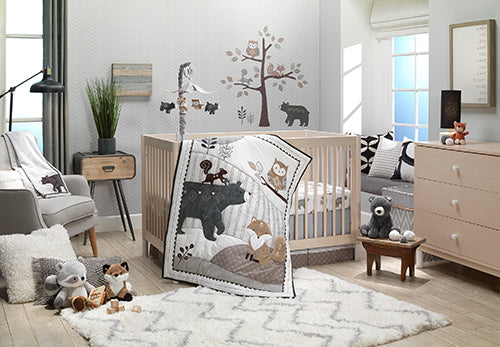
In order to promote the cognitive development of your little one, it is crucial to provide them with a stimulating environment that encourages learning and growth. By introducing various engaging stimuli, you can create an atmosphere that nurtures their curiosity and fosters their cognitive abilities without relying on traditional gender-specific norms or nursery design.
One effective way to engage your baby’s senses and enhance their cognitive development is through the use of interactive toys. These toys, such as puzzles, shape sorters, and building blocks, offer opportunities for problem-solving, spatial awareness, and critical thinking. By encouraging your baby to explore and interact with these toys, you are helping them develop important cognitive skills that will benefit them in the long run.
Another way to stimulate your baby’s cognitive development is through the use of visual aids. By incorporating colorful and visually appealing images, patterns, and artwork into their environment, you can engage their visual perception and stimulate their cognitive processes. Consider hanging artwork, displaying books with vibrant illustrations, or even creating a simple mobile with contrasting shapes and colors to captivate your baby’s attention and encourage their cognitive growth.
Furthermore, introducing music and sounds can also play a significant role in stimulating your baby’s cognitive development. Listening to different types of music can enhance their auditory perception and memory while soothing sounds, such as nature sounds or lullabies, can promote relaxation and improve their overall cognitive functioning. By creating a diverse auditory experience for your baby, you are providing them with the opportunity to develop their cognitive abilities in a harmonious and enjoyable way.
| Benefits of Engaging Stimuli for Cognitive Development: |
|
By incorporating engaging stimuli into a gender-neutral nursery, you can ensure that your baby is provided with the necessary tools to support their cognitive growth and development. Remember, a well-designed space that focuses on cognitive stimulation can have a positive and lasting impact on your baby’s overall cognitive abilities, laying a strong foundation for their future learning and success.
Introducing Stimulating Mobiles and Toys
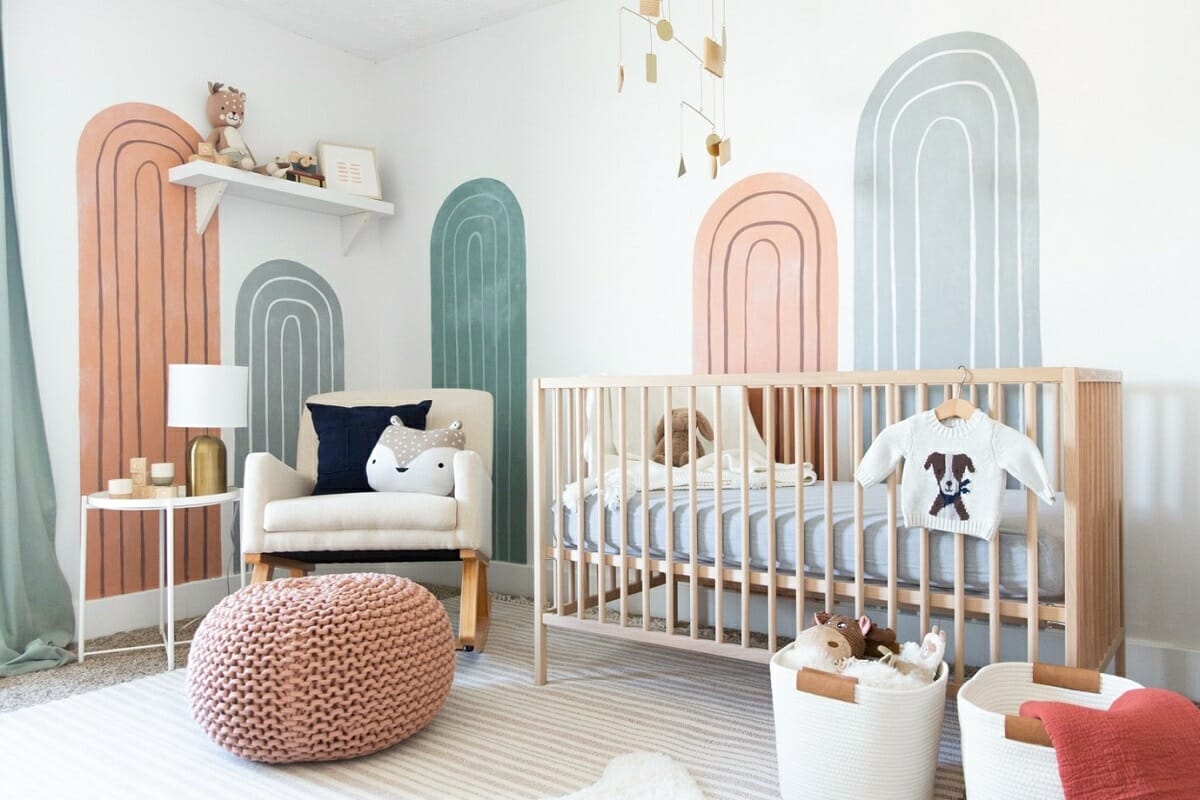
In this section, we will explore the exciting world of engaging mobiles and toys for your little one’s nursery. These captivating objects are designed to provide your baby with a variety of sensory experiences and stimulate their curiosity and development.
When it comes to selecting mobiles and toys for your baby’s nursery, it is important to choose items that are not only entertaining but also educational. These stimulating objects engage your baby’s senses, encourage their cognitive and motor skills, and promote their overall growth and development.
Mobiles, for instance, are wonderful additions to any nursery. They come in various shapes, sizes, and colors, captivating your baby’s attention and encouraging them to focus and track objects. Whether it’s a mobile with gentle, swirling movements or one with hanging objects that make soothing sounds, these visual and auditory stimuli can both relax and engage your little one.
In addition to mobiles, a wide range of toys can also enhance your baby’s nursery experience. From soft, textured toys that encourage sensory exploration to interactive toys that introduce cause-and-effect relationships, there is an abundance of options available. These toys not only provide entertainment but also aid in developing your baby’s motor skills, hand-eye coordination, and problem-solving abilities.
Remember, selecting stimulating mobiles and toys is not just about keeping your baby occupied. It’s about creating an environment that supports their growth and development. By introducing these types of objects into your baby’s gender-neutral nursery, you are fostering a space that encourages learning, exploration, and imagination.
So, as you curate your baby’s nursery, consider incorporating a variety of stimulating mobiles and toys that will captivate their senses, promote their development, and create a nurturing environment for them to thrive in.
Questions and answers
How can I design a gender-neutral nursery for my baby?
Designing a gender-neutral nursery can be achieved by using neutral colors such as whites, grays, and pastels. Opt for furniture and decor that is not specifically associated with a particular gender, such as animal or nature themes. Avoid using gender-specific colors or themes, and create a versatile space that can be easily adapted as your baby grows.
What are some popular gender-neutral nursery themes?
Popular gender-neutral nursery themes include nature-inspired designs, such as woodland or jungle themes, where animals and plants are showcased. Another popular theme is the celestial theme, featuring stars, moons, and clouds. Other options include geometric patterns, monochrome designs, or minimalist aesthetics.
What are some gender-neutral color palettes for a nursery?
Gender-neutral color palettes for a nursery typically include soft and calming colors. Some popular options are neutral grays, whites, and creams, as well as pastel shades of green, yellow, and blue. Earth tones, such as browns and beiges, can also work well in a gender-neutral nursery.
How can I make a gender-neutral nursery feel cozy and inviting?
To make a gender-neutral nursery feel cozy and inviting, consider adding soft textures such as plush rugs, fluffy blankets, and comfortable seating options. Incorporate warm lighting with lamps or fairy lights. Hang curtains or use window treatments that allow for both natural light and privacy. Personalize the space with artwork, photos, or sentimental items that add warmth and character.
What are some practical storage ideas for a gender-neutral nursery?
Practical storage ideas for a gender-neutral nursery include using baskets, bins, or boxes to organize toys, diapers, and other baby essentials. Utilize storage furniture such as dressers, bookshelves, or cubbies to keep the space tidy and clutter-free. Maximize vertical storage by installing shelves or hanging organizers on the walls. Labeling storage containers can also help with organization.
What is a gender-neutral nursery?
A gender-neutral nursery is a space that is designed without specific gender stereotypes in mind. It is a versatile and inclusive environment that can be enjoyed by both boys and girls.
Why should I consider creating a gender-neutral nursery?
Creating a gender-neutral nursery promotes equality and allows your child to explore their own interests and preferences without being confined by societal expectations. It also provides a more versatile and adaptable space for future children.
What are some common themes for gender-neutral nurseries?
Some common themes for gender-neutral nurseries include nature-inspired decor, minimalist design, animal motifs, geometric patterns, or monochromatic color schemes. These themes create a calm and peaceful environment that is suitable for both boys and girls.
What are some essential elements to consider when designing a gender-neutral nursery?
When designing a gender-neutral nursery, it is important to focus on neutral colors such as whites, grays, and pastels. Additionally, incorporating natural materials, functional furniture, and ample storage space are key elements to consider. Avoiding overly gender-specific decorations or toys is also recommended.
How can I personalize a gender-neutral nursery without using gender-specific items?
You can personalize a gender-neutral nursery by adding personal touches such as framed artwork, family photos, or handmade decorations. You can also incorporate your own interests or hobbies into the design. Adding books, toys, and accessories that reflect a variety of interests and cultures can also make the nursery feel unique and special.



